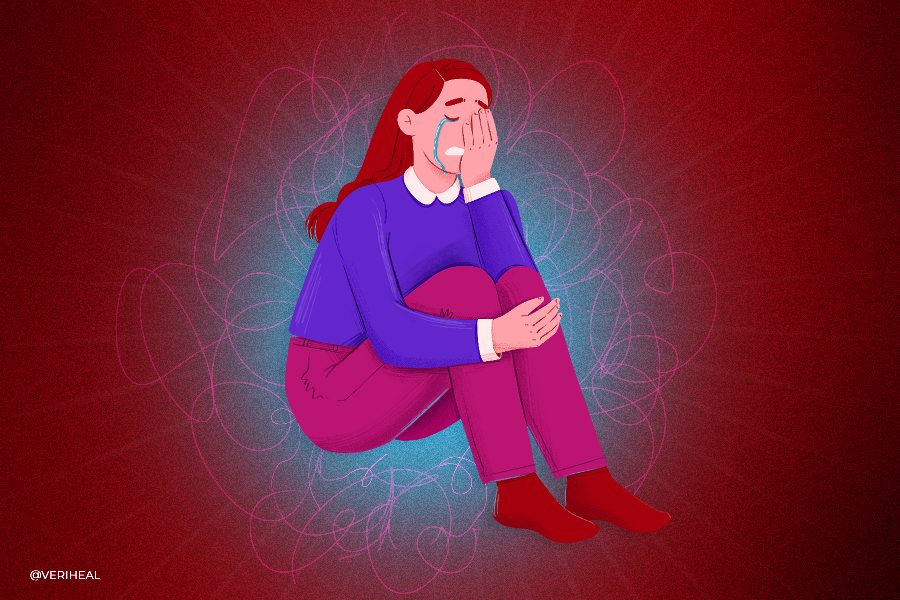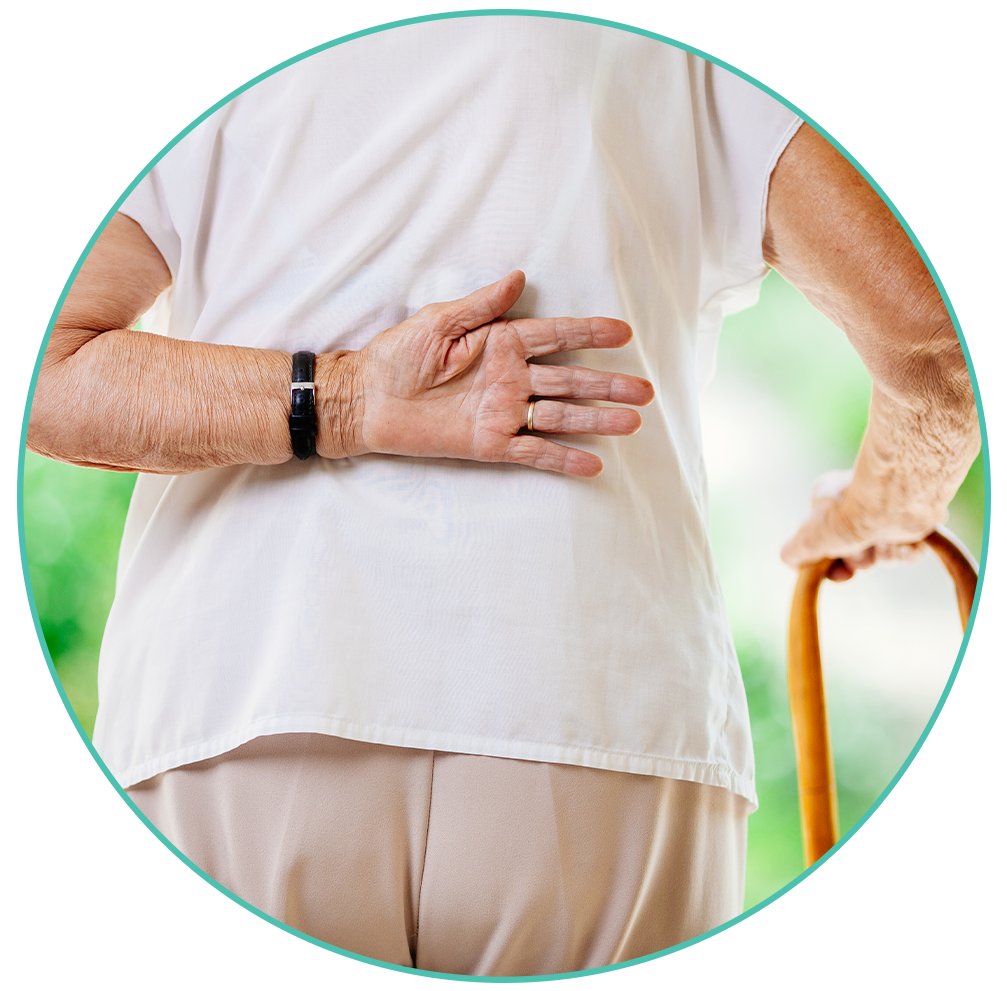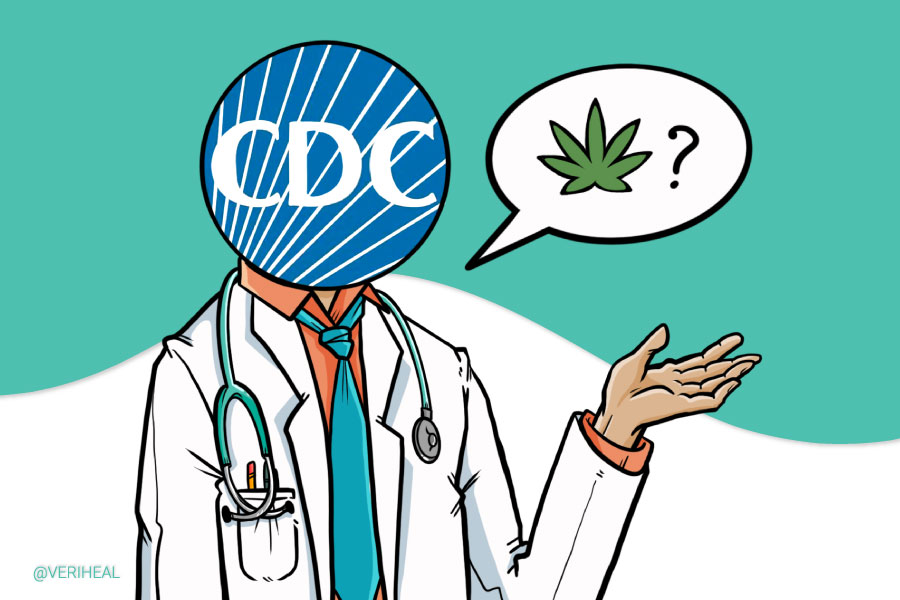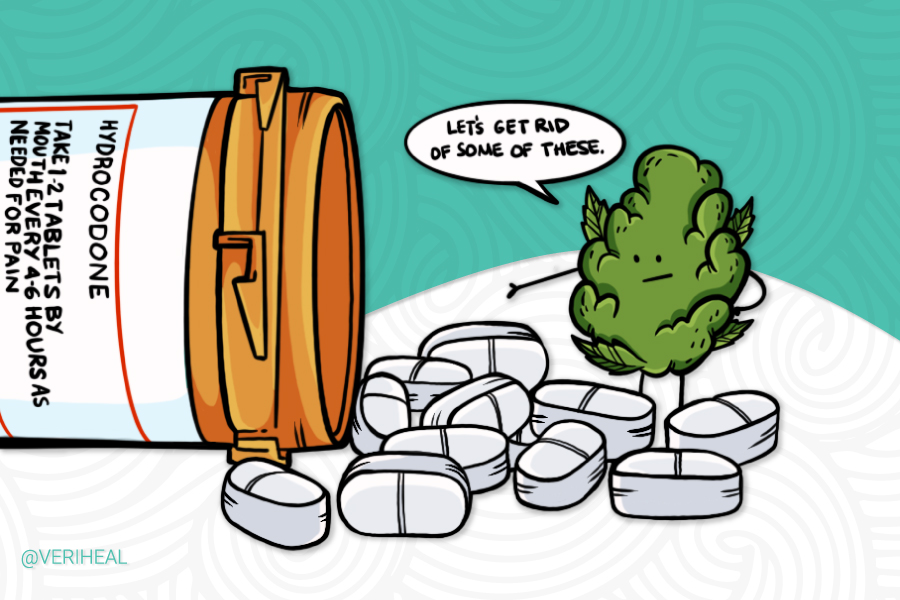Cannabis Use for Chronic Pain Symptoms: Are There Benefits?

- Considerations to Keep in Mind
- Using THC and CBD for Chronic Pain
- According to Cannabinoidologist E. Ayako Monsell
- Understanding the Different Types of Chronic Pain
- What Does the Science Say?
Since cannabis legalization has taken place in many states, there are a variety of cannabis products available for use in chronic pain, including flower, tinctures, edibles, oils, and topical products. Many topical products exclusively contain cannabidiol (CBD), which may offer benefits without the psychoactive effects of using whole cannabis.
Many patients find partial relief from CBD products, including lotions and patches. In one study, patients using CBD oil transdermally showed improvements in pain and other sensations related to peripheral neuropathy (1). However, the research on non-neuropathic chronic pain is very limited with one review article reporting “moderate-quality evidence of a small effect for the use of cannabinoids in treating chronic, non-cancer-related pain at all time points studied up to 6 months” (2).
During a task force meeting for PAINWeek 2020, doctors, clinicians and researchers met to provide prescribing guidelines to doctors. PAINWeek serves as the most recognized pain management meeting for medical professionals in the United States. The task force recommended the following prescribing guidelines:
- Patients should begin with 5 mg of CBD twice daily. Tetrahydrocannabinol (THC) should only be used if there is no improvement with up to 40 mg alone (3).
- 2.5 mg of THC should be introduced with CBD and gradually increased to a maximum of 40mg of THC a day (3).
- Frail or elderly patients should begin with 1mg of THC per dose and increase slowly (1).
- The rapid protocol for patients with severe pain or who have had significant cannabis consumption in the past, is to begin with 2.5 mg doses of CBD and THC (1:1 ratio) once or twice daily (3).
It is important to keep in mind that everyone responds differently to medications in general. A medical marijuana doctor on Veriheal’s platform may be able to help you figure out dosages to control your pain as well as address any concerns you may have regarding the psychoactive properties of marijuana.
Considerations to Keep in Mind
Many chronic pain patients using medical cannabis and CBD reported the following (2):
- Improved pain management (4)
- Sleep-promoting effects (5) and improved ability to fall asleep (4)
- Improved ability to stay asleep through the night (4)
- Improved quality of life (4) (15)
- Reduction in opioid use (6) (15)
- Decreased anxiety (5) and depression (4)
- Increased appetite (4)
Alternatively, the downside of using cannabis or CBD for chronic pain includes the following:
- There is insufficient research to determine benefits and risks associated with:
- Coughing, cardiovascular (7), and breathing issues from smoking (8)
- Fear of social stigma (7) (14)
Using THC and CBD for Chronic Pain
THC and CBD are the two main cannabinoids (chemical compounds found in marijuana) that produce health benefits for chronic pain patients. Both of these natural chemical compounds interact with the cannabinoid receptors of the endocannabinoid system of the human body and work together to provide relief for ailments like pain, anxiety, depression, etc.
A 2006 review article in the journal of Current Neuropharmacology investigates how cannabinoid receptors influence pain. Research has shown that cannabinoid receptor agonists reduce inflammation and “display synergistic effects with other systems that influence analgesia, especially the endogenous opioid system” (11). They have also shown therapeutic value against neuropathic pains. Such studies can be relatively small, biased, and anecdotal, so they are limited. Larger, randomized trials are necessary to determine any potential benefits of THC and CBD for pain.
CBD specifically has proven to be safe and only cause mild adverse effects in humans like sedation, nausea, headache, and decreased appetite. A recent 2020 article goes into the potential analgesic (pain-relieving) and anti-inflammatory effects of the popular cannabinoid in models of neuropathic pain, inflammatory pain, osteoarthritis, and more. The researchers note that more large, human studies are needed regarding CBD’s mechanism of action and potential anti-inflammatory properties. Existing studies support its pain-relieving (analgesic) effects, but most studies so far have been on animals (5). Additionally, attention should be paid to possible drug-drug interactions; therefore, always talk to a doctor or qualified healthcare provider before trying medical cannabis and/or CBD. The long-term effects of use of cannabis or CBD, especially for special populations like children, pregnant or lactating people, and the elderly are not yet known and caution should be exercised under medical supervision.
Another recent article reviews scientific evidence for THC:CBD Oromucosal Spray (known as Nabiximols) in the management of pain. Although further clinical trials are needed, the evidence from the clinical trials examined by the authors suggests that Nabiximols “may have a role in managing chronic neuropathic pain” (9).
Chronic pain conditions, or conditions that are accompanied by chronic pain, may include fibromyalgia, multiple sclerosis, epilepsy, muscle spasticity, and more.
According to Cannabinoidologist E. Ayako Monsell:
“When it comes to pain management and cannabis, it’s not all about the highest percent of THC. With over 400 known compounds in the cannabis plant – and more unknown – it truly is that this whole can be greater than the sum of its parts. Other popular or up and coming cannabinoids like THCA, CBN, THCV, CBG, and CBC each play important roles.
As patients incorporate more of the entire plant with cannabinoids, terpenoids, and flavonoids, each adding to the entourage effect, they are often able to mitigate symptoms of chronic pain. It’s like a chemical domino effect. CBD has been shown to promote endocannabinoid production within the body while its role in controlling stress can lead to the control of stress responses like inflammation which supports pain management,” said E. Ayako Monsell.
Understanding The Different Types of Chronic Pain
When it comes to chronic pain, there are three main types that people experience. The first type of pain that patients use medicinal cannabis for is nociceptive pain. Nociceptive pain is pain caused by tissue damage (12). This pain type is the most common type of chronic pain and includes damage to bones, organs, and other soft tissue. It can also include other types of chronic pain such as migraines and arthritis. Specific types of nociceptive pain include broken bones, cancer, back pain, and more.
The second type of pain that people are familiar with is neuropathic pain, or rather, pain that comes from nerve damage (12). Nerve damage can be caused by accidental injuries, limbs being crushed or emergency amputations. It can also be caused by diabetes, HIV infections, or stroke.
The final pain category is psychogenic pain (12). Psychogenic pain usually begins with nerve pain or tissue pain, but then results in additional pain that is exacerbated by anxiety, depression, stress or mental illness.
What Does the Science Say?
Chronic pain is the most popular medical condition for which patients use medical marijuana, and for some patients, marijuana use may take the place of conventional pain medication or painkillers. However, more scientific research is needed to better understand different forms of medical marijuana, methods of administration, and combination of cannabinoids (4).
According to a small scientific study published in The Journal of Pain, using medical cannabis for chronic pain resulted in a 64% decrease in patient use of opioids and other prescription pain medications (10). In addition, those patients saw a great improvement in their quality of life and experienced fewer side effects from prescription medication, an important development during the opioid epidemic.
“Patients are essentially substituting medical cannabis for opioids and other medications for CP [chronic pain] treatment, and finding the benefit and side effect profile of cannabis to be greater than these other classes of medications” (10). An article published in Pain Medicine in 2020 by Philippe Lucas, et. al, involved a large group of 1,145 medical cannabis users/patients across 21 medical clinics in Canada. The researchers showed a substantial reduction in opioid use and improvement in quality of life at one, three, and six months (15).
Another article in The Journal of Pain reviewed 18 randomized controlled trials, 15 of which “demonstrated a significant analgesic effect of cannabinoids as compared to placebo.” Past research has shown that “cannabinoids are safe and modestly effective in neuropathic pain and also for pain relief in patients with malignant diseases.” The side effects of CBD noted included drowsiness, nausea, vomiting and dry mouth (13). As mentioned previously, the research is very limited, and larger studies are needed on the effects of these chemical compounds on pain.
In new research in the journal of Complementary Therapies in Medicine, medical marijuana patients in Florida reported benefits like increased mood, improved quality of life and decreased pain. The study’s authors conducted qualitative interviews and surveys to evaluate the medical marijuana patients’ perceptions of self-reported therapeutic benefits of medical cannabis. The interviews indicated that medical cannabis was effective for pain and for reducing the use of prescription drugs. However, medical cannabis was perceived as too expensive (14). Again, more research is needed into marijuana to fully understand its pain-relieving properties.
If you’re interested in learning more or have questions about the medical use of cannabis, feel free to contact a cannabis coach or a medical marijuana doctor on Veriheal’s platform.
Note: Veriheal does not intend to give this as professional medical advice. Do not attempt to self-diagnose or prescribe treatment based on the information provided on this page. Always consult a physician before making any decision on the treatment of a medical condition.
1. Xu DH, Cullen BD, Tang M, Fang Y. The Effectiveness of Topical Cannabidiol Oil in Symptomatic Relief of Peripheral Neuropathy of the Lower Extremities. Current Pharmaceutical Biotechnology. 2020;21(5):390-402. https://pubmed.ncbi.nlm.nih.gov/31793418/.
2. Johal, H., Devji, T., Chang, Y., Simone, J., Vannabouathong, C., & Bhandari, M. (2020). Cannabinoids in Chronic Non-Cancer Pain: A Systematic Review and Meta-Analysis. Clinical medicine insights. Arthritis and musculoskeletal disorders, 13, 1179544120906461. https://www.ncbi.nlm.nih.gov/pmc/articles/PMC7031792/.
3. Basen, R. (2020, September 13). New Guidelines Issued on Medical Cannabis for Chronic Pain. Medical News and Free CME Online. https://www.medpagetoday.com/meetingcoverage/painweek/88593.
4. (2017, January 12). The Health Effects of Cannabis and Cannabinoids: The Current State of Evidence and Recommendations for Research. The National Academies of Sciences. https://www.nap.edu/catalog/24625/the-health-effects-of-cannabis-and-cannabinoids-the-current-state.
5. Mlost, J., Bryk, M., & Starowicz, K. (2020). Cannabidiol for Pain Treatment: Focus on Pharmacology and Mechanism of Action. International Journal of Molecular Sciences, 21(22), 8870. https://www.ncbi.nlm.nih.gov/pmc/articles/PMC7700528/.
6. Expert Committee on Drug Dependence: Cannabidiol (CBD) – Critical review report. World Health Organization: Geneva, Switzerland.2018. https://www.who.int/medicines/access/controlled-substances/CannabidiolCriticalReview.pdf.
7. Iffland, K., & Grotenhermen, F. (2017). An Update on Safety and Side Effects of Cannabidiol: A Review of Clinical Data and Relevant Animal Studies. Cannabis and cannabinoid research, 2(1), 139–154. https://www.ncbi.nlm.nih.gov/pmc/articles/PMC5569602/
8. Sachs, J., McGlade, E., & Yurgelun-Todd, D. (2015). Safety and Toxicology of Cannabinoids. Neurotherapeutics : the journal of the American Society for Experimental NeuroTherapeutics, 12(4), 735–746. https://www.ncbi.nlm.nih.gov/pmc/articles/PMC4604177/
9. Überall M. A. (2020). A Review of Scientific Evidence for THC:CBD Oromucosal Spray (Nabiximols) in the Management of Chronic Pain. Journal of pain research, 13, 399–410. https://www.ncbi.nlm.nih.gov/pmc/articles/PMC7027889/.
10. Boehnke, K. F., Litinas, E., & Clauw, D. J. (2016). Medical Cannabis Use Is Associated With Decreased Opiate Medication Use in a Retrospective Cross-Sectional Survey of Patients With Chronic Pain. The Journal of Pain, 17(6), 739–744. https://www.jpain.org/article/S1526-5900(16)00567-8/fulltext.
11. Piper, B. J., Beals, M. L., Abess, A. T., Nichols, S. D., Martin, M. W., Cobb, C. M., & DeKeuster, R. M. (2017). Chronic pain patients’ perspectives of medical cannabis. Pain, 158(7), 1373–1379. https://journals.lww.com/pain/Abstract/2017/07000/Chronic_pain_patients__perspectives_of_medical.23.aspx.
12. Wheeler, T. (2019, August 16). Pain Classifications and Causes: Nerve Pain, Muscle Pain, and More. WebMD. https://www.webmd.com/pain-management/guide/pain-types-and-classifications
13. Darkovska-Serafimovska, M., Serafimovska, T., Arsova-Sarafinovska, Z., Stefanoski, S., Keskovski, Z., & Balkanov, T. (2018). Pharmacotherapeutic considerations for use of cannabinoids to relieve pain in patients with malignant diseases. Journal of pain research, 11, 837–842. https://www.ncbi.nlm.nih.gov/pmc/articles/PMC5922297/.
14. Luque, J. S., Okere, A. N., Reyes-Ortiz, C. A., & Williams, P. M. (2021). Mixed methods study of the potential therapeutic benefits from medical cannabis for patients in Florida. Complementary Therapies in Medicine, 57(March), 102669. https://www.sciencedirect.com/science/article/pii/S0965229921000108.
15. Lucas, P., Boyd, S., Milloy, M., & Walsh, Z. (2020). Cannabis Significantly Reduces the Use of Prescription Opioids and Improves Quality of Life in Authorized Patients: Results of a Large Prospective Study. Pain Medicine, (December).https://academic.oup.com/painmedicine/advance-article-abstract/doi/10.1093/pm/pnaa396/6053211?redirectedFrom=fulltext

















